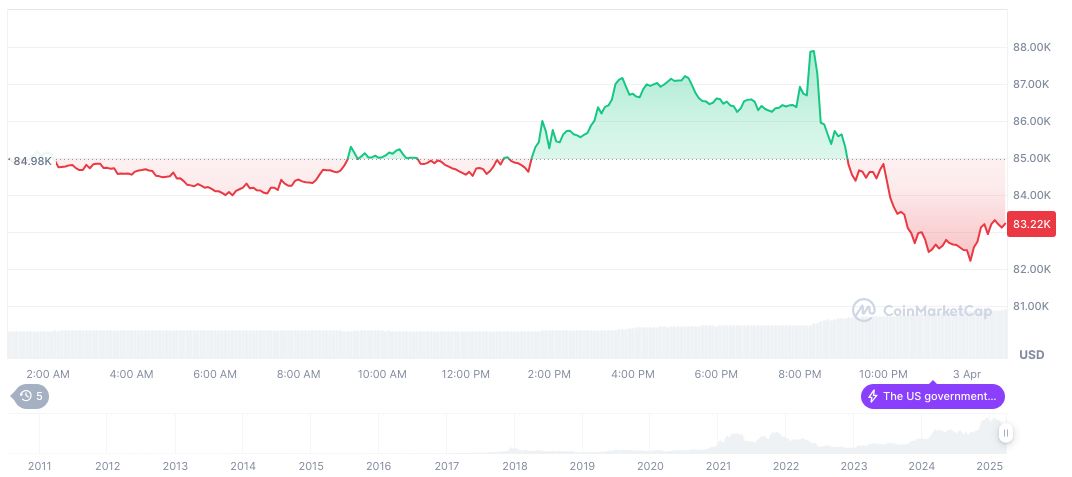- Significant decline in U.S. stock market due to trade tariffs.
- Bitcoin falls as equities plummet.
- Tech stocks experience major losses amid market uncertainty.
The U.S. stock market experienced a sharp decline on April 3, 2025, with technology stocks leading the losses. The market drop coincided with new reciprocal tariffs announced by the Trump administration.
Fresh tariffs by the U.S. government have triggered widespread financial market reactions, highlighting global economic tensions. As markets grappled with these changes, Bitcoin fell to $82,558 amid increased volatility.
U.S. Stock and Bitcoin Drop: Tariff-Induced Market Shock
U.S. stock indexes, including the Dow Jones Industrial Average and Nasdaq, saw declines as President Trump’s tariffs targeted global trade partners. This move incited concerns, particularly among technology investors. President Trump’s policy is aimed at China, imposing a 34% import tax. Apple, a significant player, witnessed a 9% drop in its market value.
The sharp market decline has resulted in significant losses, with Apple, Amazon, and Nvidia stocks plummeting by 9%, 8.9%, and 7.8%, respectively. Bitcoin’s price also sharply decreased from $88,000 to $83,000, underscoring the tariff’s impact on tech sectors.
“The Dow Jones Industrial Average preliminarily dropped by 1,700 points (approximately 4.8% decline).” – Unknown Analyst, Market Observer
Tech and Crypto Sectors Face Global Economic Uncertainty
Did you know? In March 2022, a similar stock market downturn occurred due to inflation concerns and policy uncertainties, impacting tech-heavy indexes significantly.
Bitcoin (BTC) is currently priced at $82,558.35, showing a -2.36% shift over 24 hours, reflecting broader market instability. With a market cap of $1.64 trillion and market dominance at 61.92%, BTC’s performance closely mirrors equity movements, according to CoinMarketCap. Its trading volume stands at $42.08 billion, up by 45.68%.

Coincu researchers highlight that technology stocks and cryptocurrencies are vulnerable during economic tensions, due to their reliance on global supply chains and investor sentiment. They note that potential regulatory responses and further tariff negotiations could determine future market direction.























